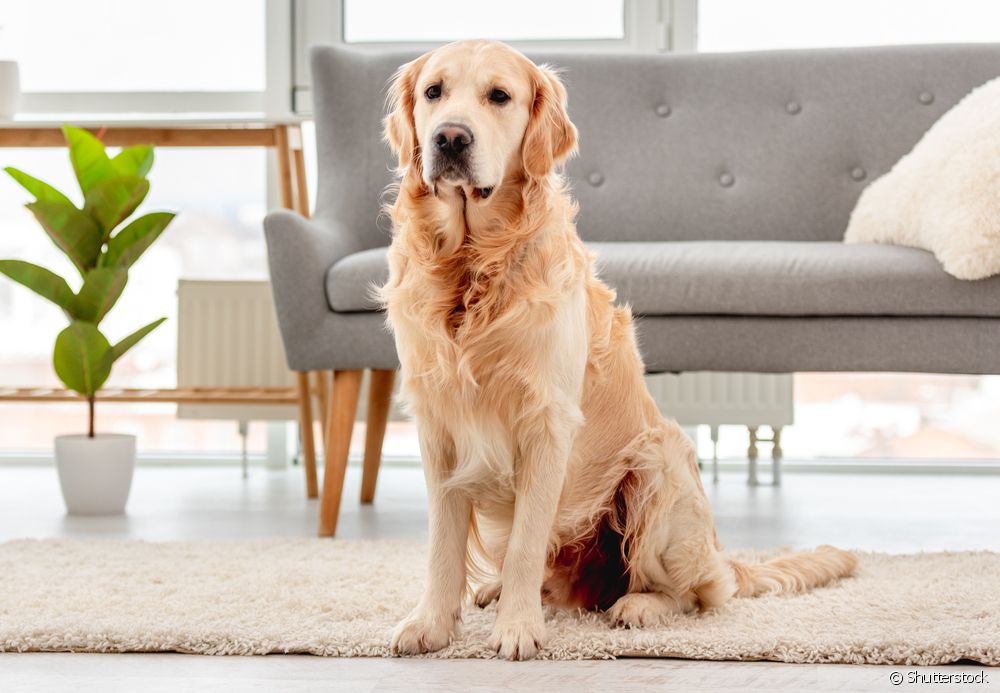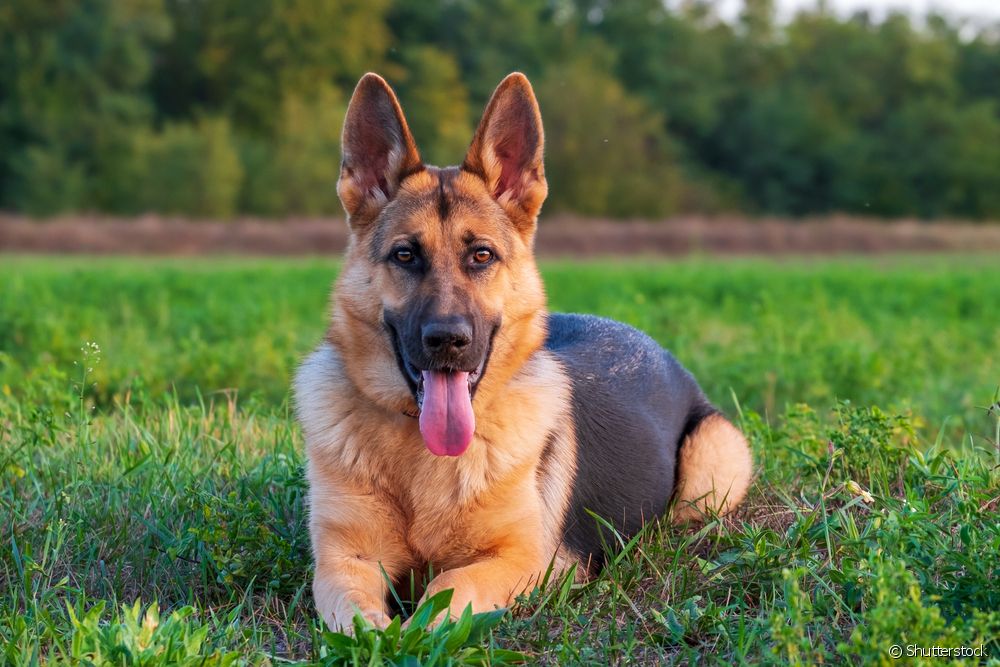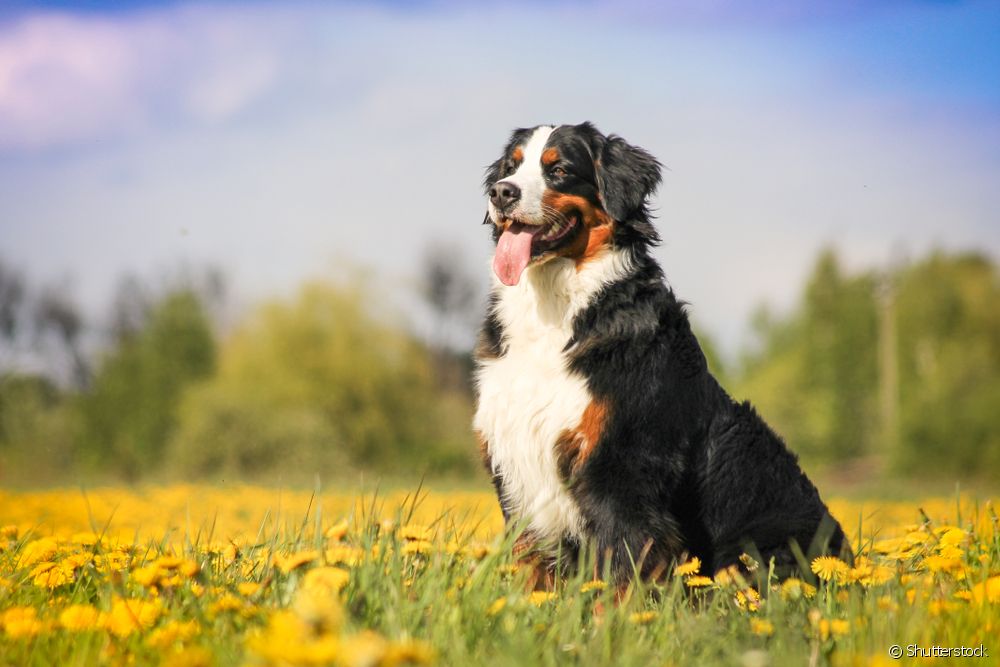Coxofemoral dysplasia in dogs: the 10 dog breeds most likely to develop the disease

Table of contents
Coxofemoral dysplasia in dogs is a disease that affects the locomotion of animals. It happens when there is a mismatch between the bones that form the hip - so the disease is also called hip dysplasia. In a case of hip dysplasia in dogs, the femur and pelvis are in constant friction, which leads to pain and mobility problems. Among the symptoms, the most common aredog limping on the hind leg, with pain and difficulty making common daily movements such as sitting, lying down and climbing higher places.
See_also: Dog dragging its buttocks on the floor: what health problems can it indicate?Coxofemoral dysplasia in dogs can be treated with surgery to fix the femoral head to the acetabulum and/or with medication. Painkillers, such as dipyrone for dogs, and anti-inflammatory drugs are usually the most indicated. In addition, physiotherapy for dogs is a great way to relieve pain, improve mobility and increase the quality of life of the pet. The disease usually arises fromdue to factors such as genetics, poor diet, sedentary lifestyle and obesity. Any dog can have hip dysplasia, but the disease is much more frequent in large and giant dogs. Want to know which are the 10 breeds that are most predisposed to develop hip dysplasia? Check it out below!
1) Golden Retriever: hip dysplasia in dogs is a common condition in this docile and popular breed

The Golden Retriever is one of the most popular dog breeds in Brazil and worldwide. Its large size does not prevent it from living well indoors. However, the size of the Golden Retriever dog makes it more likely to suffer from hip dysplasia. When adopting a dog of this breed, it is important to always be aware of its behavior. Any sign of a dog in painAs the Golden Retriever is already predisposed to the disease, any signs should be taken seriously.
2) Labrador: the dog limping hind leg is one of the main signs of dysplasia in dogs of the breed

Like the Golden Retriever, the Labrador is also a large dog with a predisposition to this disease. Because of its large size, it is common for it to develop not only hip dysplasia in dogs but also elbow and knee dysplasia. The Labrador dog is quite energetic and agitated, so keep an eye on the furniture inside the house. Avoid placing them in spaces that the Labrador can end up inIn a picture of a dog limping on its hind leg, what might be seen as a slight bruise after a knock on a piece of furniture could mean something more serious for the Labrador.
3) Rottweiler: hip dysplasia is a big problem in this strong dog breed

Anyone who sees a Rottweiler with its strong and muscular physique does not imagine that it also suffers from bone and muscle problems. However, hip dysplasia in dogs is quite common for the breed. The Rottweiler puppy can weigh more than 60 kg, which makes its bones end up suffering greater impact. Thus, hip dysplasia in dogs of the breed is very common. From puppyhood, the Rottweiler needs tobe monitored by a veterinarian to prevent this condition from appearing and hindering their locomotion in the future.
4) German Shepherd: cases of coxofemoral dysplasia in dogs are frequent in the herding dog

The German Shepherd is another large dog prone to dysplasia. Although it is one of the most used dogs for work, even being one of the preferred ones to act as a police dog, you have to be careful with the movement of the animal's hip. The German Shepherd dog is very physically resistant, but its weight can end up having a strong impact on the bones. Therefore, whenever you see thedog with pain in the back or limping, do not hesitate and take him to be evaluated.
5) English Bulldog: even though they are small, dysplasia can appear as a consequence of obesity.

Large dogs are the ones that suffer the most from this condition, but small dogs are not immune. The English Bulldog is an example of a small breed with a predisposition to hip dysplasia. Even though they are not large in size, the pet is prone to overweight. Canine obesity is one of the main causes of hip dysplasia in dogs because the small bones of the English Bulldog end upsuffering a greater impact, since they are not the ideal size to support all that weight. Therefore, it is important to prevent canine obesity to also prevent hip dysplasia.
6) Boxer: difference in the size of the legs predisposes to the appearance of hip dysplasia in dogs

The Boxer dog is one of those very muscular dogs that draw the attention of passers-by because of its athletic build. Its large size is one of the reasons for its tendency to suffer from hip dysplasia in dogs, but not the only one. The Boxer's hind legs are usually lower than the front ones. As a consequence, it ends up forcing too much weight on its hind legs, leading to dysplasiaThe result is that the dog limps more often than not. From an early age, the Boxer needs this special care with locomotion.
7) Saint Bernard: the dog with pain in the back may indicate cases of dysplasia in the breed

The St. Bernard is one of those dogs that, despite its size, does not scare anyone because of its docile personality. Very large and muscular, it is to be expected that hip dysplasia in dogs is a common health problem in the breed. The St. Bernard dog can weigh up to 80 kg, which causes a great impact on the bones. In addition, the dog has a tendency to obesity, which further favors the disease.appearance of hip dysplasia. The Saint Bernard is one of the laziest dog breeds around, so it can be difficult to spot a dog limping on its hind leg at first. What may be seen as lazy walking may actually indicate a dysplasia that is causing the pet pain when moving around.
8) Great Dane: the weight of this giant dog impacts the bones, causing dysplasia

If a large dog already suffers from hip dysplasia in dogs, imagine a giant dog! The Great Dane is considered one of the largest dog breeds in the world and there is a reason for that: it can be up to 80 cm tall and weigh up to 60 kg. All this size, however, comes at a price. The Great Dane tends to suffer from all the typical problems of a large dog. Therefore, theCoxofemoral dysplasia in dogs is a common occurrence in the breed, and it is very important to maintain frequent veterinary follow-up.
9) Bernese Cattleman: even though he is very athletic and muscular, dysplasia can affect his bones

The Bernese Cattleman, also called Bernese Mountain, is a classic herding dog of colder climates. Reaching up to 70 cm in height and weighing around 50 kg, the dog has an extremely developed body. Muscular and strong, the Bernese Cattleman breed loves to exercise and stay active. However, even with these characteristics, the dog is still quite heavy and can suffer from dysplasiaAs the Bernese Cattleman is very large, the condition is often diagnosed in dogs of the breed, as are other typical large dog bone diseases.
10) Neapolitan Mastiff: the giant dog breed needs care to avoid hip dysplasia

The Neapolitan Mastiff is a very old breed that surprises with its size. It is a giant dog that can reach 75 cm and weigh up to 70 kg. Coxofemoral dysplasia in dogs of the Neapolitan Mastiff breed turns out to be a common problem because of its size. The breed often suffers from motor difficulties that lead to the dog with pain in the back. Therefore, taking care of the health ofA Neapolitan Mastiff puppy from a young age is the best way to prevent more serious locomotor problems in the future.

